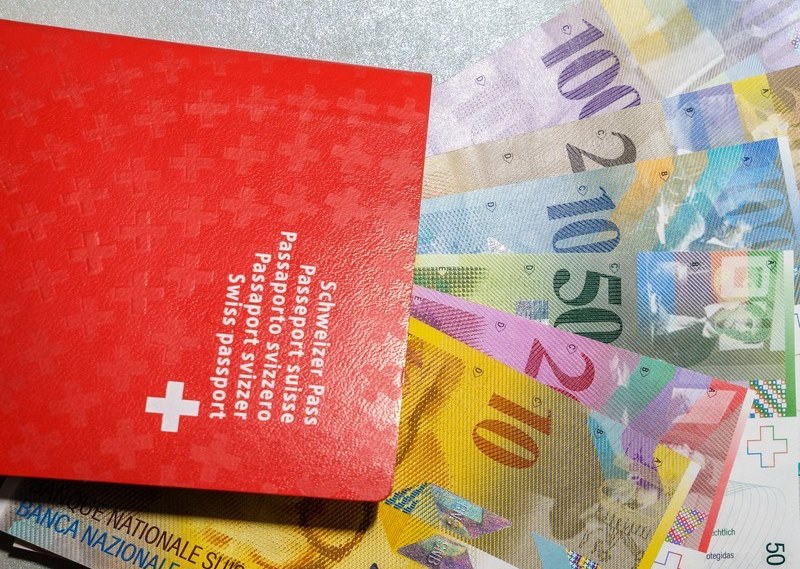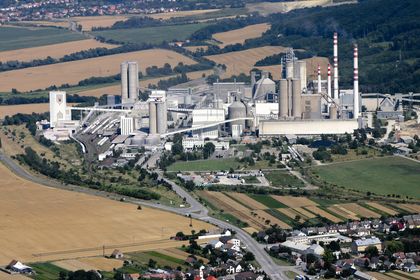Russia is once again pouring cement. Pushed by strong demand, production keeps growing. In 2007, it reached 60 million tons, a 33% increase compared to 2005. Better, it should once again reach its Soviet period level (80 million tons in 1989) by 2010. The consumption is boosted by industrial investments and a dynamic real estate market, particularly around Moscow where demand has grown by an average of 10% over these last five years. To such a point that by 2015, Russia should be using some 116 million tons cement a year. A lucrative business that Swiss cement giant Holcim intends to take advantage of.
“For the time being, we have two factories in Russia, one in Shurovo, the other in Volsk. In 2007, we employed more than 2,000 people there, out of a total of 90,000 employees with the group, for a production of 4.4 million tons a year”, says Peter Gysel, the Swiss group’s spokesperson. With such modest quantities, Holcim, despite being the world’s second leader in cement manufacturing (behind Lafarge), is far from dominating the Russian market: it is only the fourth producer with a 7%market share. The Ewrozement group remains the country’s main cement-maker (55% of the market), followed by Sibirskiy Cement (SibCem, 9%). However, Holcim doesn’t intend to leave it at that. “From 2010 onwards, we will be doubling the production of our Shurovo factory in order to fill the muscovite demand,” continues Peter Gysel. “Furthermore, besides our business, we are also involved in other activities in Russia. For example, we supported financially the renovation of hand painted icons in an orthodox church in Volsk.”
But Holcim will have to face tough competition in its attempts to conquer the huge Russian market. The Ewrozement group plans on investing 1.2 billion dollars by 2010 tomodernize its factories and increase its capacities, whereas Lafarge will be putting 125 million euros on the table to bring the production of its Voskresensk site near Moscow to 3 million tons in 2009. In addition, German manufacturers Heidelberg Cement and Dyckerhoff intend to build new factories in Saratov, Krasnodar and Yekaterinburg. All this is not enough to bother Holcim. “We are going to continue investing in the countries of Eastern Europe and in Russia,” indicates Peter Gysel.
This production increase is part of the group’s strategy, which aims to strike a balance between their sales in mature markets and in fast growing ones. In 2007, Holcim’s sales in emerging countries (Africa, Latin America, Asia, Eastern Europe and Russia) accounted for 48.3% of the group’s turnover, compared to 41.1% in 2005. This diversification allows Holcim to be less exposed to the declining American market than its immediate competitors: the French group Lafarge, the sector’s number one and Mexico’s Cemex, its number three.
In 2007, the results of the group from Zurich were in fact much better than those of its two rivals. Sales reached 27.1 billion francs, or a 12.9% increase compared to 2006, and the net profit leapt 67.2% to 4.54 billion. Therefore, over the first nine months of 2007, Holcim’s shares increased 16%, while those of Lafarge and Cemex declined 3% and 18% respectively. “The market rewarded Holcim due to its greater presence on the fast growing emerging markets compared to Cemex and Lafarge,” underlines an analyst.
Nevertheless, the future of cement manufacturers, on the Russian market as well as in emerging countries, could be dealt a heavy blow by the rise in energy prices. Indeed, the making of cement’s basic constituent – clinker – takes place in a high-energy consuming oven, the temperature of which reaches 1500°C. As a result, expensive oil means an unaffordable cement. “Demand from the emerging countries will remain high,” believes an analyst. “But I have trouble in seeing how cement producers will manage to pass on the entire rise in costs to their customers. Their profit margins are therefore likely to melt like snow in the sun.” A worrisome situation for banks: Credit Suisse degraded its predictions on Holcim’s (as well as on Lafarge’s) rate as from 1st July, anticipating the group’s ‘underperformance’. Analysts use two arguments to justify this position, which led to the fall of both groups’ rates on the stock market: a reduction of profit margins in emerging countries and a decline of mature markets.
In order to cushion its profits, Holcim is therefore seeking to reduce its energy consumption. “Every time we open a new site or modernize an old one, we put in the best possible technologies in order to lower our energy consumption and also our CO2 emissions. Besides, whenever possible, we use alternative combustibles rather than plain fuel,” underlines Peter Gysel. An insufficient effort to drastically reduce the cement works’ energy bill. As a result: “If the production costs continue to increase, we will have no other choice than to raise our prices so as to maintain our profit margins,” announced Paul Hugentobler at the end of June. A member of Holcim’s executive committee, Hugentobler also pointed out that over the first few months in 2008, the group’s profitability had decreased 5 to 7% compared to 2007.
Concrete goes green Will using concrete one day amount to protecting the environment? It seems unlikely. Cement being an essential constituent of concrete, cement manufacturers are still hoping to improve their product’s image, in order to safeguard the environment as well as to cut their energy bill. The reduction of our CO2 emissions has become a priority”, says Peter Gysel, Holcim’s spokesperson. A first solution would be to switch energy sources by using alternative combustibles (industrial waste, biomass) or even wind turbines instead of the traditional energy-consuming ovens.
Second solution: improve the oven’s efficiency. In that respect, the main steps have already been taken by major producers in the west. There is therefore not much room left for progress in that area… In emerging countries, however, and particularly in China where 70% of the world’s cement was produced in 2007, cement works are aging and the stakes are therefore considerable.
A final solution is to develop new formulas, the latter amounting to the beginnings of future “green concretes”. “We invest a huge amount in research and development in order to come up with this type of material,” notes Peter Gysel. As a result, the Swiss cement manufacturer recently supplied a type of cement, the production of which emitted 60% less CO2 than traditional cement for the construction of office building facades in Montreuil.













